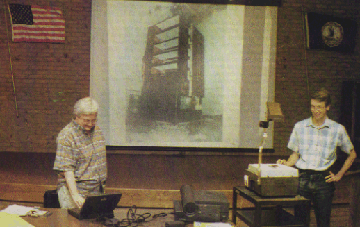For Educators
Live from RXTE

Drs. Jim Lochner and Laura Whitlock worked with Ms. Bruce Hemp, a middle school teacher from S. Gordon Stewart Middle School, to bring astrophysics to the classroom. Students in the Virginia Shenandoah Valley area had the chance to predict the date that the binary star system X 1700-377 had an eclipse. This binary system consists of two stars, one of them an X-ray emitting neutron star. Periodically its companion star moves in front of it, eclipsing it - these eclipses are detectable because of the decrease in detectable X-rays from the neutron star.
The students used data from RXTE to predict the first school day between September 25 and October 9 that the satellite showed the neutron star emerging from an eclipse. Students made their predictions based on the system's past patterns as revealed by data from the RXTE's All-Sky Monitor (ASM). The internet figured prominently in their research. It allowed them to actually watch the eclipse via the Science Operation Facility's (SOF) Real-Time Remote Observing Web page.
This event has sparked some competition between the schools that are participating - six winners were chosen (two from each of the three classes) to get a deluxe tour of NASA's Goddard Space Flight Center. Participating classes included Ms. Hemp's Stewart group of students, Ms. Virginia Healy's seventh grade math class from Thomas Harrison Middle School, and Mr. Eugene Blackmer's astronomy class from R. E. Lee High School. Getting the right answer alone was not be enough to win the contest, noted Lochner and Whitlock, who selected winners from students' written reports. Clarity, spelling, and grammar, as well as scientific understanding all were taken into account.
In addition to using an equation, the students had to learn to translate between standard, Greenwich, Julian time, and RXTE Mission Days. Ms. Healy noted that solving this riddle required "lots of good math."
Visit the Live from RXTE Homepage!
(it will open in a new tab/window)


